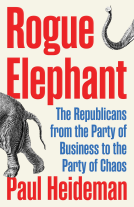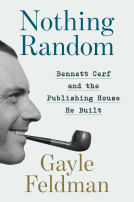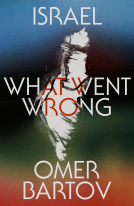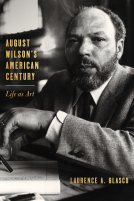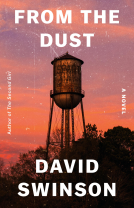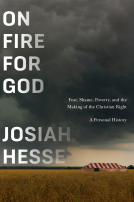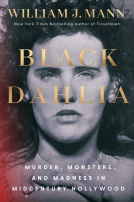
The Harlem Uprising
Segregation and Inequality in Postwar New York City
by Christopher Hayes
This title was previously available on NetGalley and is now archived.
Send NetGalley books directly to your Kindle or Kindle app
1
To read on a Kindle or Kindle app, please add kindle@netgalley.com as an approved email address to receive files in your Amazon account. Click here for step-by-step instructions.
2
Also find your Kindle email address within your Amazon account, and enter it here.
Pub Date Oct 26 2021 | Archive Date Feb 02 2022
Talking about this book? Use #TheHarlemUprising #NetGalley. More hashtag tips!
Description
Christopher Hayes examines the causes and consequences of the uprisings, from the city’s history of racial segregation in education, housing, and employment to the ways in which the police both neglected and exploited Black neighborhoods. While the national civil rights movement was securing substantial victories in the 1950s and 1960s, Black New Yorkers saw little or uneven progress. Faced with a lack of economic opportunities, pervasive discrimination, and worsening quality of life, they felt a growing sense of disenchantment with the promises of city leaders. Turning to the aftermath of the uprising, Hayes demonstrates that the city’s power structure continued its refusal to address structural racism. In the most direct local outcome, a broad, interracial coalition of activists called for civilian review of complaints against the police. The NYPD’s rank and file fought this demand bitterly, further inflaming racial tensions. The story of the uprisings and what happened next reveals the white backlash against civil rights in the north and crystallizes the limits of liberalism.
Drawing on a range of archives, this book provides a vivid portrait of postwar New York City, a new perspective on the civil rights era, and a timely analysis of deeply entrenched racial inequalities.
Advance Praise
"An immersive chronicle of the July 1964 uprising in New York City’s Harlem and Bedford-Stuyvesant neighborhoods over the police killing of a Black teenager . . . Hayes unpacks the causes and effects of the uprising in scrupulous detail, and makes salient connections to recent events. This scholarly history is a powerful reminder that it takes ‘great force’ to bend the moral arc of the universe toward justice."
—Publishers Weekly
"The Harlem Uprising offers a powerful narrative of the riots and upheaval in Harlem and other African American neighborhoods in New York City in the summer of 1964. Hayes’s vividly written book provides a stinging portrayal of midcentury New York from the perspective of Black New Yorkers and offers an important new historiography of the carceral state."
—Kim Phillips-Fein, author of Fear City: New York’s Fiscal Crisis and the Rise of Austerity Politics
"Such a needed study of New York's long history of racial inequality in housing, schools, jobs, and policing and the years of frustrated civil rights struggles that laid the ground for the 1964 Harlem uprising. Hayes examines Mayor Lindsay's decision to constitute a majority-civilian CCRB in its wake, the swift and successful police-led backlash that ended it, and the law and order politics that gained ascendancy in the city and the nation."
—Jeanne Theoharis, author of A More Beautiful and Terrible History: The Uses and Misuses of Civil Rights History
"This is an exceptionally important and powerful book about white racism and police brutality in the Jim Crow North, especially New York City. That postwar urban crisis produced the 1964 Harlem and Brooklyn uprisings. This book’s argument is forceful and its grasp of historiography is masterful."
—Komozi Woodard, author of A Nation Within a Nation: Amiri Baraka and Black Power Politics
Available Editions
| EDITION | Other Format |
| ISBN | 9780231181877 |
| PRICE | $30.00 (USD) |
Average rating from 4 members
Featured Reviews
Reading Christopher Hayes' work certainly demonstrates that those who ignore history are doomed to repeat it. Hayes offers a fascinating historical analysis of mid-century racial turmoil. He rightly shows the historical roots of the Civil Rights Movement pre-date the 1960s, and he brilliantly exposes the deep roots of systemic racism in New York, and America more broadly. The author's examination of police violence against African Americans could not be more timely, a sad reminder that names like George Floyd and Breonna Taylor are the latest in a long and tragic line of victims of racist violence. Hayes also offers an important critique of 1960s liberalism, and a reminder that there are no easy answers when it comes to healing. A fantastic account of the interplay between institutions and communities, and the long struggle to shape a more equitable America
(I used most of this as a pitch...)
Christopher Hayes’ The Harlem Uprising: Segregation and Inequality in Postwar New York City, coming out in October, is a contemporary masterpiece that concretely speaks about Harlem and Bedford-Stuyvesant, Brooklyn in 1964, when racial unrest was seemingly at its peak and riots were regularly breaking out during one of New York’s hottest of summers. In a more general way, however, Hayes’ work uses this specific and volatile moment in our nation’s history to present readers with a firmer understanding of what structural or systemic racism is and how it pervades all aspects of the United States, including “housing, education, working, and policing.”
The first half of the book, published by Columbia University Press, provides the context and lead-up to how New York City got to such a fever pitch; the second half of the book speaks about the uprising itself, which took place soon after the July 16th, 1964 killing of 15-year-old James Powell, a Black teenager from the Bronx, at the hands of White off-duty police officer, Thomas Gilligan, a 17-year veteran of the NYPD. Hayes provides a comprehensive and descriptive narrative that is both archival and current, showing readers that George Floyd’s killing and the slaughter of literally hundreds of other Black men and women across America by law enforcement officials is chronic, pervasive, and an oftentimes intentionally forgotten common occurrence; in other words, history repeats itself and, as much as human beings may be aware of this, it less emotionally taxing to let these murders go rather than to face what is, at the very least, an uncomfortable series of horrific situations that deserve more than just our attention.
An essential book for all - to understand the mechanics behind social, economic, and residential inequality and segregation in America.
Christopher Hayes, an assistant teaching professor at Rutgers University, New Jersey, unpacks the complicated, intertwined reasons for upheavals on the example of an uprising in Harlem and Bedford-Stuyvesant in New York in July 1964. In his book, he provides an overview of the prerequisites leading to the rebellion; police brutality and corruption, housing segregation, no access to decent education, to name a few. In contrast with the South, where racial prejudice was explicit and changes made by civil rights movements became apparent right away, the North basked in its presumed equality for all Americans. However, what we would call now structural racism thrived unchallenged. White Americans judged any concessions under nonviolent pressure from civil rights activists and organizations as a zero-sum situation: if they win, we lose. When peaceful sit-ins and demonstrations didn't bring desired improvements, the oppressed people turned to violence.
The book includes day-by-day, hour-by-hour, and sometimes minute-by-minute events between the 16th and 22nd of July 1964, starting with the shooting of James Powell, a 15-year-old African American, by a white police Lieutenant Thomas Gilligan. The narrative covers the incidents of looting and confrontations with the police, as well as negotiations between the authorities and New York's civil rights activists. The upheaval revealed a typical feature of the era: sophisticated rhetoric masked the New York mayor's unwillingness to compromise. What minor accomplishments the negotiators bargained for were reversed several years later.
While reading, I tried to formulate something intangible that prevented me from fully submerging into the narrative. Reminiscing the material and comparing the research to other papers, I assume the book lacks the basic idea. While detailed and well-researched, the study presents a string of facts with no new twist or revelation, provides no new perspective on the subject. It was interesting to find out that the most impoverished borough in New York was not, in fact, world-known Harlem but Bedford-Stuyvesant: the latter had no organized force against prejudice. It was interesting to see how detached the famous civil rights activists who represented African Americans were from the ordinary people. Yet, only an epilogue describing Black Lives Matter movements and the influence of COVID-19 expresses the author's position on the matter.
The data about the temperature/humidity of uprising's every day seems out of place and excessive.
I'd recommend the book to readers who would like to explore the insides of inequality in the past and present.
I received an advance review copy for free, and I am leaving this review voluntarily.
Readers who liked this book also liked:
Laurence A. Glasco
Biographies & Memoirs, History, Nonfiction (Adult)
Joe Tidy
Business, Leadership, Finance, Computers & Technology, Professional & Technical
